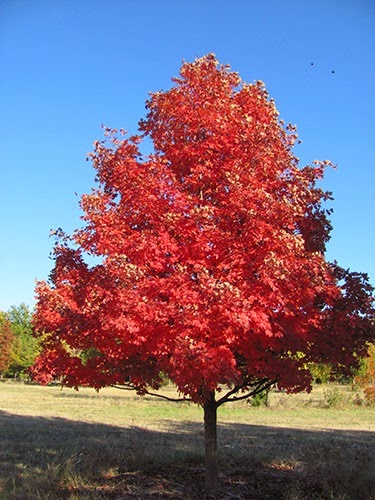Caring for Holiday Plants
Cassie Homan, Horticulture Agent
For a horticulturist like me, Christmas time means bright colorful
poinsettias and other holiday plants to liven up the season. Most of these plants
can be enjoyed long past Christmas with the correct care. Here are some simple steps
to care for the most common holiday plants.
Poinsettias:
 The poinsettia was named after Joel Robert Poinsett, an amateur
botanist and the first American ambassador to Mexico. He sent some poinsettia
plants home to Greenville, South Carolina in 1825. Poinsettias are the number
one potted flowering plant grown in the United States. The large colorful parts
of the plant are not true flowers, they are modified leaves called ‘bracts’.
The true flowers are the small yellow/green buds in the center of the bracts.
The poinsettia was named after Joel Robert Poinsett, an amateur
botanist and the first American ambassador to Mexico. He sent some poinsettia
plants home to Greenville, South Carolina in 1825. Poinsettias are the number
one potted flowering plant grown in the United States. The large colorful parts
of the plant are not true flowers, they are modified leaves called ‘bracts’.
The true flowers are the small yellow/green buds in the center of the bracts.  To keep poinsettias looking beautiful, water when the plant’s soil
feels dry. Place in a room with bright light but not next to a drafty window.
You can try to keep your poinsettia year round, but they are bred to be large
and colorful, not long lasting. It might be a fun experiment to keep the plant
till next Christmas but it is also easy to pick up a new one each season.
Contrary to popular belief poinsettias are not toxic. They can cause stomach
irritation but unless you eat around 600 leaves you won’t get sick.
To keep poinsettias looking beautiful, water when the plant’s soil
feels dry. Place in a room with bright light but not next to a drafty window.
You can try to keep your poinsettia year round, but they are bred to be large
and colorful, not long lasting. It might be a fun experiment to keep the plant
till next Christmas but it is also easy to pick up a new one each season.
Contrary to popular belief poinsettias are not toxic. They can cause stomach
irritation but unless you eat around 600 leaves you won’t get sick.
Holiday Cactus:
 There are two types of holiday cactus, Christmas cactus and
Thanksgiving cactus. The main difference between the two is the shape of the
leaf segments. On the Thanksgiving cactus, the edges of the segments are
toothed or pointed; on the Christmas cactus the segments are smaller and have
rounded lobes. The Thanksgiving cactus tends to grow more upright, while the
Christmas cactus tends to be more drooping. These cacti are called epiphytes
because they grow on other plants in nature such as tree branches or decaying
humus on the ground.
There are two types of holiday cactus, Christmas cactus and
Thanksgiving cactus. The main difference between the two is the shape of the
leaf segments. On the Thanksgiving cactus, the edges of the segments are
toothed or pointed; on the Christmas cactus the segments are smaller and have
rounded lobes. The Thanksgiving cactus tends to grow more upright, while the
Christmas cactus tends to be more drooping. These cacti are called epiphytes
because they grow on other plants in nature such as tree branches or decaying
humus on the ground.
To get your holiday cactus to re-bloom, you must manipulate the
light conditions. They bloom in response to short days and cool temperatures.
In the greenhouse or in the home, expose them to nine hours of light and
fifteen hours of darkness starting in September. These conditions will cause
the plant to set flower buds. Unlike poinsettias these plants are very long
lived and are often passed down from generation to generation. They are also
easy to propagate by cutting two to three stem segments, letting them dry a few
days, then putting them in a rooting mix.








